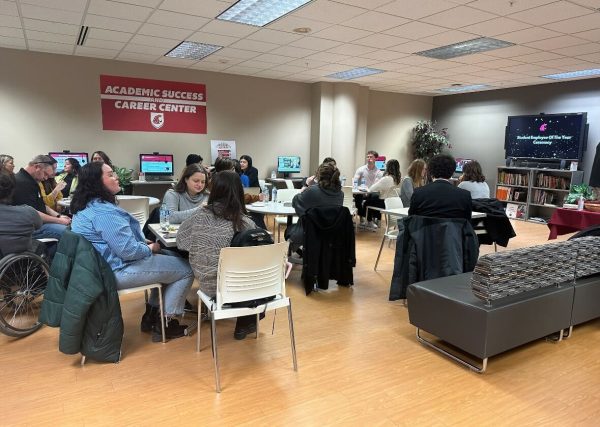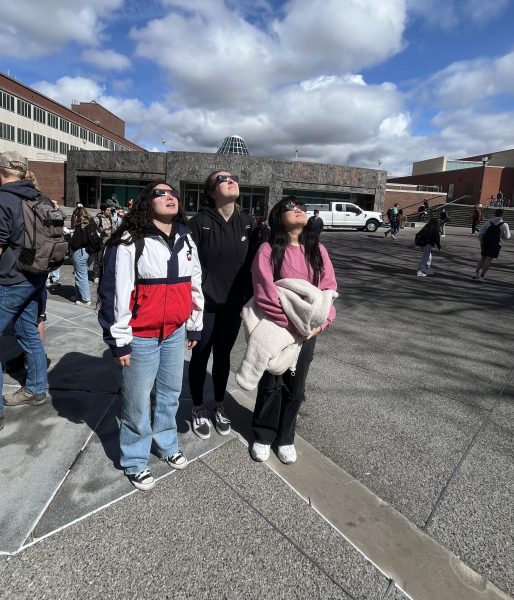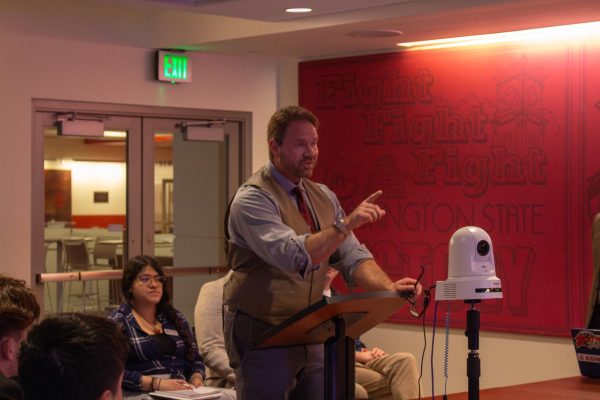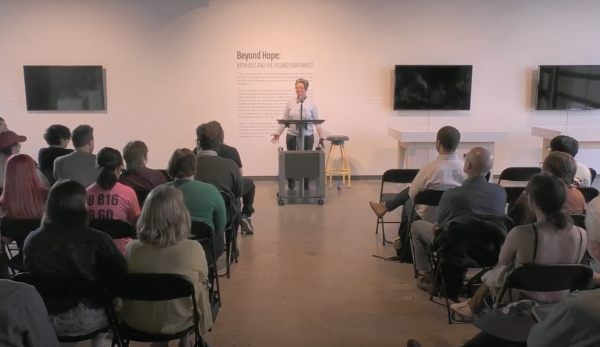WSU’s first Deaf veterinary student cares without hearing
November 22, 2013
Although Kimi Ross may not be able to hear an animal in distress, she is still in school to learn how to take care of one.
“No one has ever said to me, ‘You can’t hear that so you can’t be a vet,’” said Ross, WSU’s first Deaf veterinary student.
Ross, 46, didn’t start out wanting to pursue veterinary medicine; she wanted to be a special education teacher.
“I got into a situation in a classroom. One of the students had inappropriate behavior, and I couldn’t monitor it because I couldn’t hear it,” Ross said. “It was not safe or fair to the kids, and I was very upset about it.”
After the incident, Ross enrolled in introductory veterinary classes at the University of Alaska at Fairbanks.
Along with taking classes, Ross took part in a United States Department of Agriculture (USDA) grant to start a program for people living in rural areas to be able to take care of their animals, she said. She provided care to isolated animals unable to reach a vet.
“It was good but frustrating because I wasn’t able to do all the things I wanted,” Ross said. “I like working with animals, and I want to give back to the community.”
Her family then decided to move to Washington state from Alaska because they wanted to live in a rural area. Ross brought her whole sled team of 11 dogs, and they needed a place far enough away where the barking wouldn’t disturb the neighbors, she said.
“I plan on moving back to Alaska and do ambulatory care,” Ross said. “Sheep and goats are my main interest, but there are also reindeer, yak, bison, that people raise as food animals that I would work with.”
Ross will still be able to perform all the usual vet skills such as listening to a heartbeat with an amplified stethoscope. She is currently in the process of learning to monitor heart and lung sound by touch, a valuable skill for all veterinarians – hearing or not, she said.
“Most days it’s not very much different. The system works so well you hardly notice she is there,” said Steve Hines, professor of veterinary microbiology and pathology, who has Ross in a class. “It really makes you think more about what you do and how you do things. We just interact with Kimi like a regular student.”
Ross’ classmates have also been accepting, she said. While in her anatomy class, a group of students would get up once a week and do what they called ‘sign of the week,’ and teach it to their fellow students. This semester there was an assignment dealing with music video parodies and all the classmates included captions, Ross said.
“I was amazed in my experience – that is not something people are sensitive to unless you ask them,” Ross said. “I have been very impressed with my classmates making sure I am sitting in the front or in front of the group if we are watching a surgery.”
There are about 100 Deaf veterinarians, and Ross attends conferences on Deaf people in the sciences. There aren’t that many, she said.
“I agreed to all these interviews because if it inspires a kid with a disability that’s a good thing, even if it’s one kid, even if I don’t hear about it,” Ross said.
She also has brought many new opportunities to the veterinary school, Hines said. Students will have experience with Deaf people and be able to attract that cliental, which will strengthen the community.
Hines said in his 20 years of teaching he has never seen such a strong community in the veterinary school before.
“We all had the same reaction, how is this going to work,” Hines said. “It has opened our minds in general, it did for me. Kimi’s impact will go beyond a few kids with disabilities.”





















